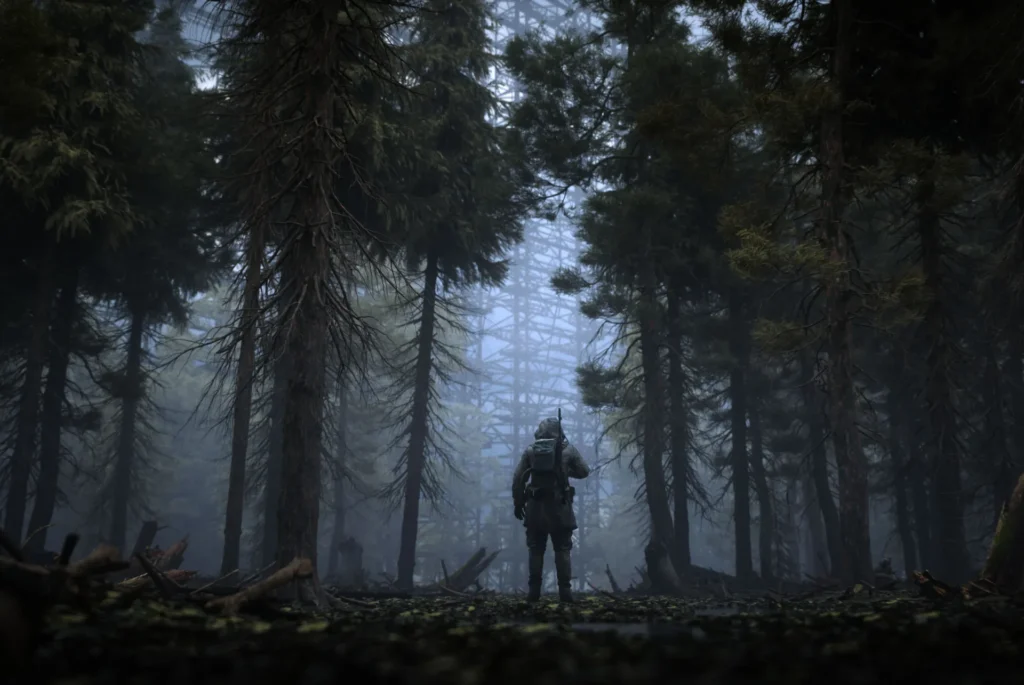In STALKER 2: Heart of Chornobyl, the land doesn’t just serve as a backdrop; it’s the central character, a living, breathing force that defies human control and punishes hubris. Developer GSC Game World has created an uncanny and almost sentient digital slice of Ukraine—a place where beauty and terror coexist in a fragile, hostile equilibrium. It’s a game where every step feels like a gamble, every moment on edge, and the land itself acts as both antagonist and allure.
From the very first moments, Heart of Chornobyl draws players into the Zone with a visceral sense of foreboding. The air crackles with invisible radiation, the horizon is a wasteland of haunting beauty, and even in its moments of calm, the landscape feels alive. For a game so rooted in systems—complex AI, dynamic weather, intricate survival mechanics—the greatest triumph of STALKER 2 lies in how it conveys the overwhelming indifference of nature and the Zone itself. Here, the land is not just hostile but actively transformative, as if it resents our very presence.
The Zone as a Character
The Chornobyl Exclusion Zone, a real-world site of ecological disaster, has long been a source of fascination for storytellers. But STALKER 2 goes beyond mere replication; it reimagines the Zone as a mythical and profoundly alien environment. GSC Game World has infused this digital version with a distinct personality. The land is unpredictable, almost as if it has its own set of motives, reacting to the player’s presence in ways that feel deeply personal.
Take the game’s dynamic anomalies, for instance. These pockets of supernatural energy dot the landscape, warping reality and creating deadly hazards. They aren’t just random obstacles but manifestations of the Zone’s hostility, and their erratic behavior reinforces the sense that this land is far from passive. As you cautiously throw bolts to detect invisible threats or sprint to avoid a sudden gravitational anomaly, you are forced to reckon with the land’s refusal to be tamed.
And yet, the Zone also offers moments of staggering beauty. Sunlight filters through skeletal trees, casting long shadows across the broken terrain. Mist clings to the ground in the early morning, and the haunting notes of a distant guitar echo through abandoned settlements. These fleeting glimpses of tranquility make the Zone feel all the more real, a place that is as intoxicating as it is lethal.
The Systems Beneath the Surface
Underpinning this living world is a web of interlocking systems that make every encounter feel meaningful. GSC Game World’s A-Life 2.0 system simulates a living ecosystem, where NPCs, creatures, and anomalies interact independently of the player. Bandits may attack a stalker camp, or mutants might wander into a firefight—all without your involvement. The result is a world that feels organic and reactive, where events unfold whether or not you’re there to witness them.
Survival mechanics further amplify the tension. Resources are scarce, and every decision carries weight. Do you risk venturing into a radiation-soaked ruin for valuable artifacts, knowing you might not have enough anti-radiation meds to make it back? Do you engage with a group of bandits, or avoid them to conserve ammunition? These decisions are never easy, and the Zone punishes recklessness with ruthless efficiency.
Yet, even as you struggle to survive, there’s a strange allure to the challenge. The constant balancing act between risk and reward creates a compulsion to push further, to explore just a little more of the Zone despite the danger. It’s a testament to the game’s design that this cycle never feels frustrating; instead, it reinforces the central theme of humanity’s fraught relationship with nature.
The Land as Reflection
What makes STALKER 2 so compelling is how it uses the Zone as a metaphor. The land is not just a physical space but a reflection of humanity’s best and worst impulses. It is a place scarred by disaster, yet teeming with strange new life. It resists our attempts to conquer it, yet we cannot help but return, drawn by the promise of discovery or redemption.
The game’s narrative leans into this duality. The Zone is both a cautionary tale about the consequences of unchecked ambition and a symbol of resilience. Its ruins tell stories of the lives that were lost or irrevocably altered, yet its anomalies and artifacts hint at a future beyond human understanding. It’s this tension between destruction and renewal that gives the game its emotional resonance.
At times, the game feels almost philosophical in its approach. The Zone’s indifference serves as a stark reminder of humanity’s insignificance in the grand scheme of things. It’s a humbling experience, one that forces players to confront their own limitations. And yet, it’s also a deeply human story, one of survival, perseverance, and the search for meaning in a hostile world.
A Technical and Artistic Triumph
From a technical perspective, STALKER 2 is a marvel. The game’s visuals are stunning, capturing the eerie beauty of the Zone with an almost painterly quality. Lighting plays a key role in creating atmosphere, whether it’s the golden glow of a sunset or the flickering of a headlamp in a darkened tunnel. The sound design is equally immersive, with every creak of a distant structure or growl of an unseen mutant adding to the tension.
The game’s systems are ambitious, yet they rarely feel overwhelming. The inventory management, weapon customization, and crafting systems are all intuitive, striking a balance between realism and accessibility. Even the smallest details, like the way your Geiger counter ticks faster as you approach a radiation hotspot, contribute to the sense of immersion.
But it’s the way all these elements come together that truly sets STALKER 2 apart. The game doesn’t just simulate a world; it evokes a sense of place. It’s a place that feels indifferent to your presence, yet profoundly affecting. A place that is as beautiful as it is terrifying.
What STALKER 2: Heart of Chornobyl achieves, more than any other game I’ve played, is the sense that the land itself is alive—watching, waiting, and responding to your every move. It’s a world that refuses to be tamed, a place that punishes hubris and rewards careful observation. Yet, despite its hostility, it’s a place I can’t help but return to, drawn by its mystery and beauty.
GSC Game World has crafted something extraordinary here: a game that doesn’t just challenge you to survive but invites you to reflect on your place in the world. In the Zone, humanity’s best intentions collide with nature’s indifference, and the result is a haunting, unforgettable experience. Whether you’re drawn to the game’s intricate systems, its rich storytelling, or its breathtaking visuals, STALKER 2 is a journey worth taking—even if it’s trying to kill you.
No comments yet.







